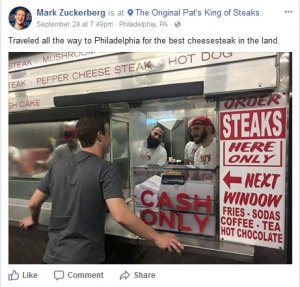Watch all the Transform 2020 sessions on-demand here.
Brands have long sought the ability to understand, relate to, and motivate target consumers. The entire advertising-technology industry tirelessly innovates to find new signals that provide even the smallest bit of added insight into their target audiences. Brands are spending billions of dollars each year in hopes that consumer insights will allow them to produce more strategic marketing plans. Their struggle, however, has always been with the availability of quality data. Historically, marketers have relied on data fueled by fairly vague demographics.
Demographics share statistics on age, gender, income, education level, and of course location. While such demographics have almost single-handedly guided the advertising world’s decisions in spending billions of dollars annually, they’re simply not robust enough to fully understand modern consumers.
Targeting beyond age and location
Deeper insights that actually share the needs, motives, and interests of consumers have been out of reach until now. The emergence of artificial intelligence and machine learning processes are set to lift marketing limitations by redefining the sheer volume of intricate data that today’s machines can process.
That said, no data is as telling as conversational speech. Complete personalities are profiled by the way humans communicate. Psychology informs us that words mean something, and how we communicate is super powerful in understanding who we are and how we operate. Fortunately, social media has provided a platform for consumers to share their likes, interests, and dislikes in an open digital forum.
June 5th: The AI Audit in NYC
Join us next week in NYC to engage with top executive leaders, delving into strategies for auditing AI models to ensure fairness, optimal performance, and ethical compliance across diverse organizations. Secure your attendance for this exclusive invite-only event.
Collecting insights from social sharing
Advertisers can now assign unique personalities to consumers based on the way they communicate on social media. Audience profiling platforms take textual data from social media posts and run it through an AI engine to cluster personalities based on speech. Audience profiling also gives information like what branded and non-branded content the target consumer responds to, when they typically interact on social media, and most importantly, insights into why they respond favorably to certain types of content.
The days of segmenting based on demographics and geography are over. We can now segment based on personalities and demonstrated behaviors instead. That’s a big deal.
Creating a personality profile
To give an example of how social data could help marketers learn more about their target consumers, we’ll create a sample of a personality profile. Let’s start by examining this Facebook post from Mark Zuckerberg:

This post is loaded with information about his personality. By analyzing the social speech, we know he has a high degree of awareness, he strives for achievement, he challenges authority, and he’s highly intellectual. All of this can be gleaned simply by his social speech. However, one post does not give us a holistic view of a consumer’s entire personality. It takes substantial data from various social interactions to get a full personality profile.
This is where more posts with additional data can help. Here are a couple more posts from Zuckerberg’s feed that can help us build a sample personality profile:


Now we’ve learned that Mark values the time he spends with his family and enjoys his role as a father. This helps us learn more about our potential customer, but one last bit of information is necessary to tie this data into our brand’s offering.
To apply these insights to real-world marketing strategies, let’s examine this last post by Zuckerberg. From the post below, we can determine that Mark has an emotional connection to good food.

With an AI-powered media plan, a food brand could appeal to Zuckerberg’s various and complex personality traits. A contest or challenge might ignite his achievement-striving nature; messaging that reflects family values would draw an emotional connection; and finally, an image of a savory meal could trigger a direct reaction.
Leveraging the raw power of AI
Modern marketers are tapping into the raw power of artificial intelligence and machine learning to read social speech and build cohorts that go beyond basic demographics. With real insights based on consumers’ actual personalities, brands can appeal to the motivations, needs, and interests of their target audiences instead of simply targeting age and location. Marketing to personalities will move advertising from a billion-dollar guessing game to a focused effort that uses art and science to get the message right.
Robin Boytos is the vice president of insights at Ayzenberg Group, a frontline marketing agency.


